Can’t Remove Bluetooth Devices on Windows 10? Try these fixes
Using Bluetooth devices on your system is supposedly very easy. You simply turn on Bluetooth on your machine and pair it with the device. However, Windows 10 has had its fair share of Bluetooth issues and they tend to be really frustrating. One of these issues involves being unable to remove your Bluetooth device from your Windows 10 machine. Upon trying to remove the Bluetooth device, users sometimes face the “Remove Failed” option when trying to disconnect a Bluetooth device via the Settings app.
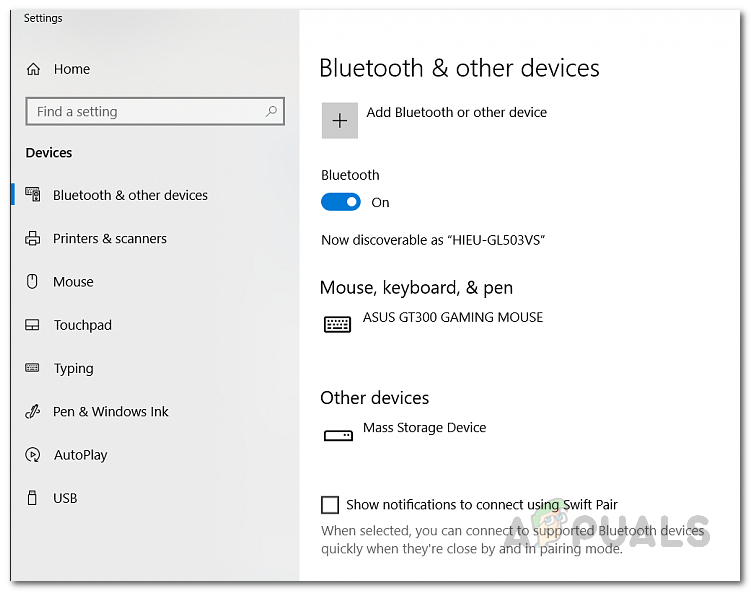
In addition to that, in some cases, the device does not even appear under Bluetooth & other devices in the Settings app while it can only be found in the Device Manager window. As it turns out, the device apparently reappears when you try to remove them which is not really what you would want. This essentially prevents you from being able to pair the device again. The problem in question can sometimes be caused when the Windows service responsible for pairing the devices is not running. The service responsible for this is known as Device Association Service and it basically enables pairing between your system and any wireless devices that you might have. Thus, if it isn’t running, you won’t be able to pair devices.
With that said, there are actually multiple ways of removing a paired device from your computer. We will be going through all of them and hopefully one of those ways will help you in removing the device. So, without further ado, let us get started.
Turn on Airplane Mode
The first thing that you should do when you face the issue in question is to simply turn on airplane mode on your Windows machine. Airplane mode is a feature that essentially disables some hardware features on your device so that it is only able to perform the basic functions. In Windows or any other device, Airplane mode will disable the Bluetooth, along with other wireless functions. This includes Wi-Fi as well so if you are on a wireless connection, that will be disabled as well while airplane mode is on. In short, airplane mode stops all signal transmission from your device, and thus, you are only able to perform limited functions on your machine.
To enable airplane mode on your Windows 10 machine, follow the instructions given down below:
- There are two easy ways of toggling Airplane mode. On your taskbar, click on the Notifications icon that is found in the right corner.
- From there, click on the Expand option to see all of the available options.
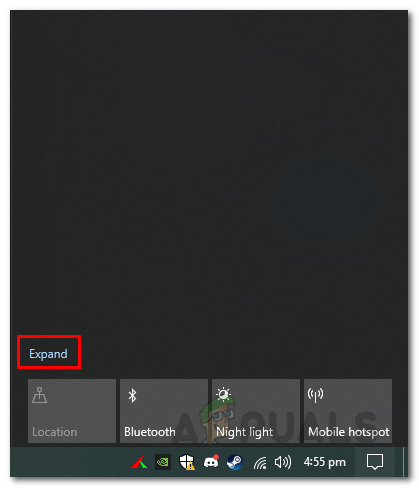
Expanding Notification Area Options - Once you have done that, click on Airplane mode to turn it on.

Toggling Airplane Mode - Alternatively, you can also toggle Airplane mode via the Settings app. Press Windows key + I to open up the Settings window.
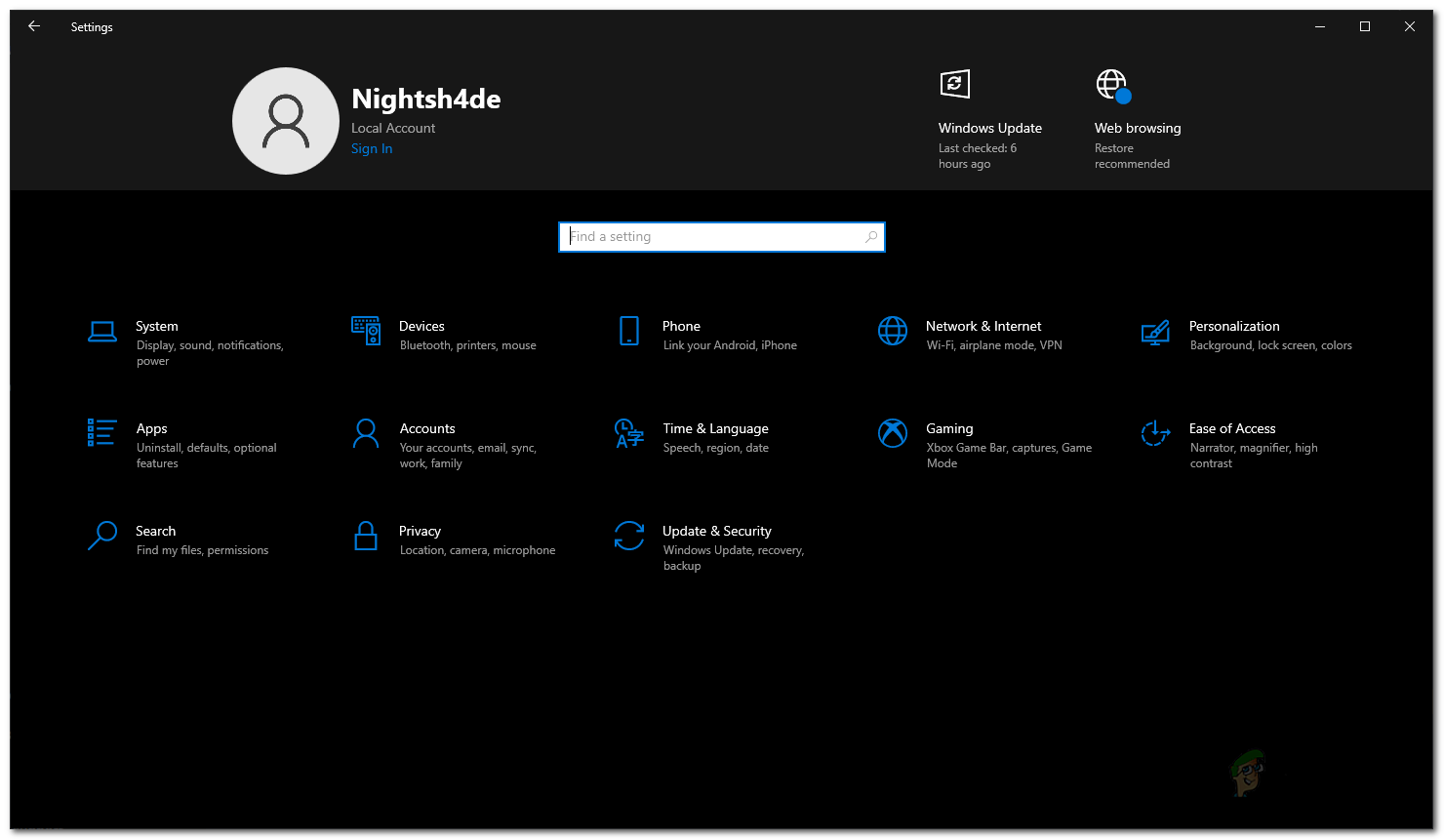
Windows Settings - From there, navigate to Network & Internet. Then, on the left-hand side, click on Airplane mode.

Toggling Airplane Mode via Settings - After that, you can toggle Airplane mode using the slider.
Remove Bluetooth Device via Device Manager
If turning on Airplane mode does not fix the issue for you and the device is still paired to your computer, you can try removing it via the Device Manager. The Device Manager is a really useful utility that lists all of the devices that are connected to your system as well as the drivers that are installed for the specific devices. To remove your Bluetooth device using Device Manager, follow the instructions given down below:
- First of all, open up the Device Manager window by searching for it in the Start Menu.
- Once the Device Manager window is open, click on the View option in the menu bar and then click on the Show hidden devices option.
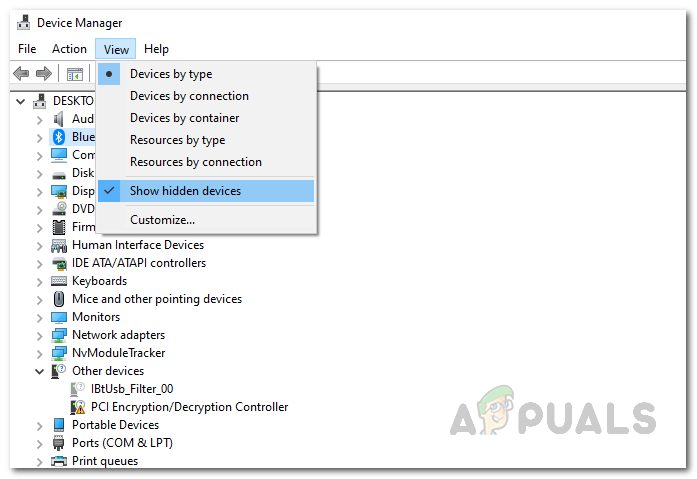
Showing Hidden Devices in Device Manager - After you have done that, look for your Bluetooth device under the Bluetooth category.
- Once you have found your device, right-click on the device and click the Uninstall device option.
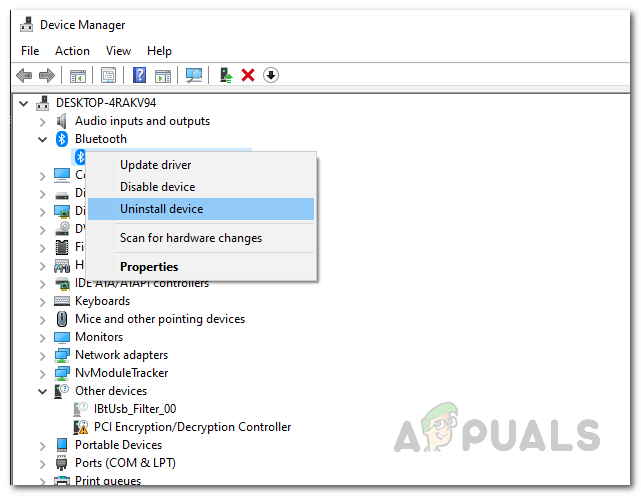
Uninstalling Device – Device Manager - See if that removes your Bluetooth device.
Remove Bluetooth Device From Control Panel
In addition to the Device Manager, you are also able to view and manage the devices that are connected to your system via the Control Panel. This does not, however, mention all the components of your system as the Device Manager but that’s not something we have to worry about here as it lists the Bluetooth devices which is what we are interested in. Follow the instructions down below to remove your Bluetooth device using Control Panel:
- First of all, open up the Control Panel by searching for it in the Start Menu.
- Once the Control Panel window is open, go to Hardware and Sound.

Control Panel - After that, click on Devices and Printers.
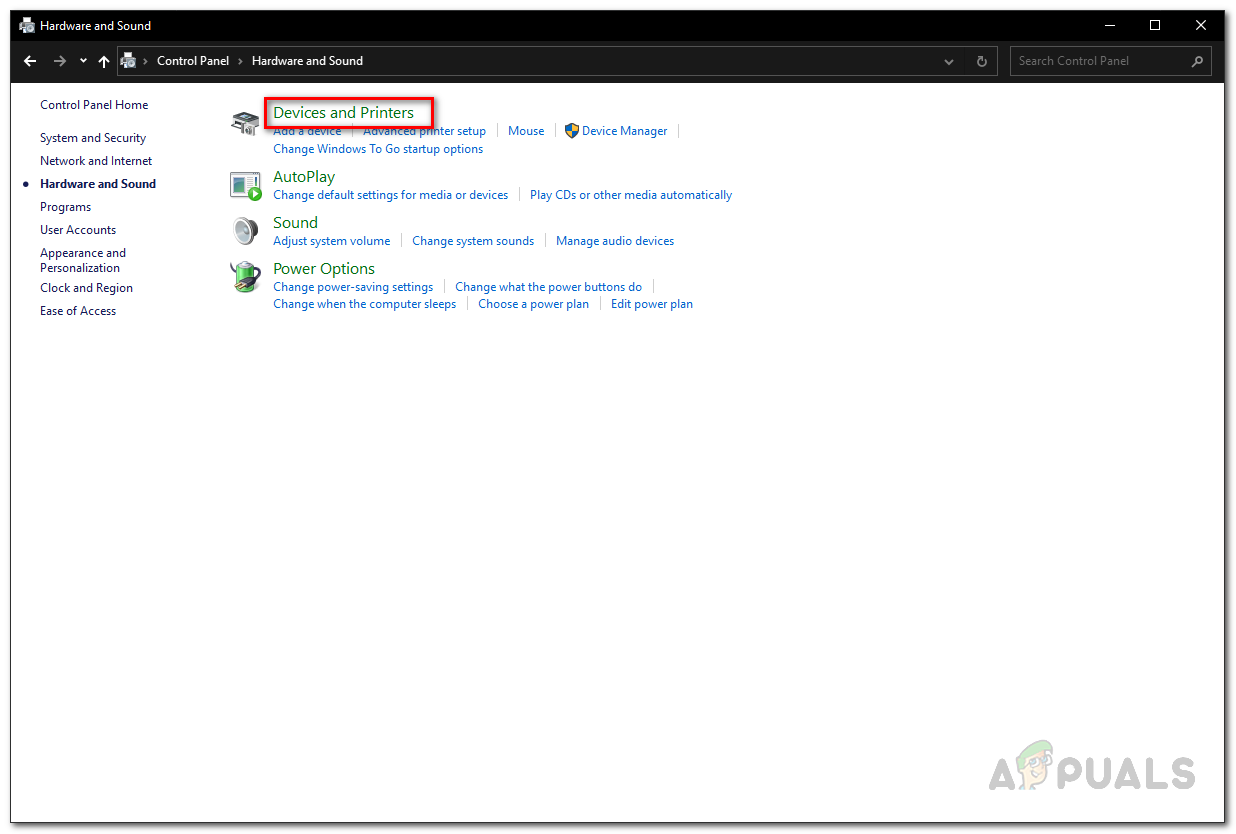
Control Panel Hardware and Sound - Here, you will be shown the different devices that are connected to your system.
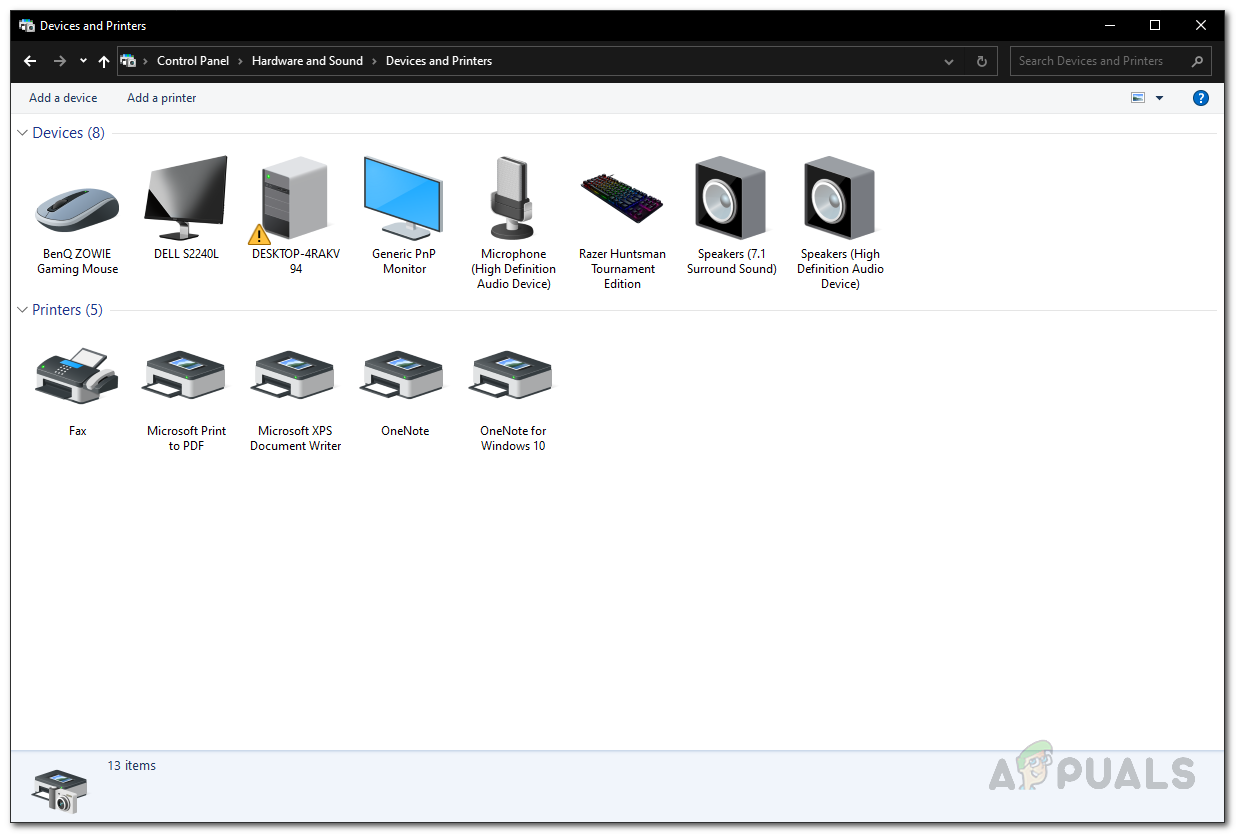
Control Panel Devices - Right-click on your device and then choose Remove device from the drop-down menu.
- See if that removes your Bluetooth device.
Remove Bluetooth Device Key From Windows Registry
If you are more of a techie and wish to get your hands dirty with the Windows Registry, there’s good news for you as you can also remove a troublesome Bluetooth device via the Windows Registry. This involves deleting the device’s key that basically represents the device in the Windows Registry. Make sure you follow the given steps carefully as an unwanted change to the Windows Registry can cause several system issues. With that said, let us get into it.
- First of all, open up the Run dialog box by pressing Windows key + R.
- Then, inside the Run dialog box, type Regedit and hit the Enter key.
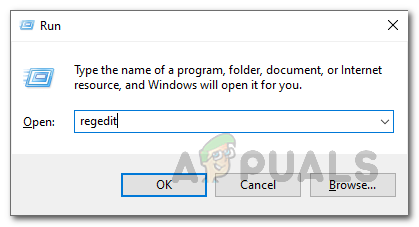
Opening Windows Registry - This will open up the Windows Registry window. There, navigate to the following directory by copying and pasting it in the address bar:
Computer\HKEY_LOCAL_MACHINE\SYSTEM\CurrentControlSet\Services\BTHPORT\Parameters\Devices

Bluetooth Device Keys - There, you will be able to see 12-digit device keys that look like “00024c02b458“.
- To find which device key corresponds to which Bluetooth device, simply double-click on the key. The Name value associated with each key corresponds to the name of the device.
- Once you’ve found the key, right-click on it and choose the Delete option from the drop-down menu.
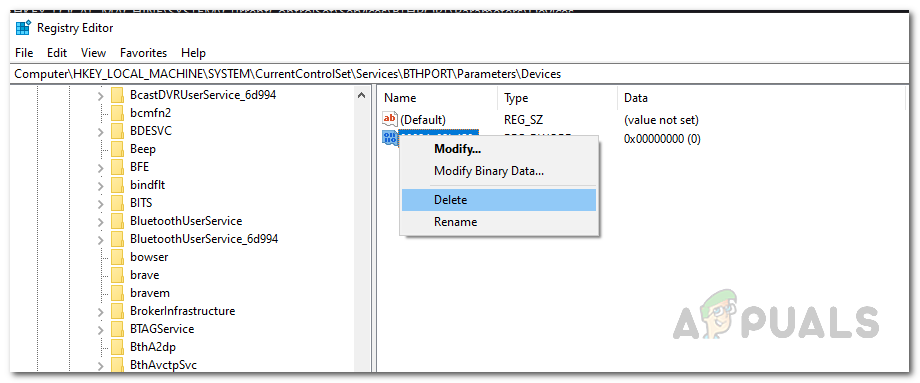
Deleting Device Key - After you have deleted the key, go ahead and reboot your system.
- Once your computer starts, the problematic Bluetooth device should now be gone.
Enable Device Association Service
As it turns out, there’s a Windows service that is responsible for pairing devices to your system. If this service, namely Device Association Service, is not running, you won’t be able to remove the Bluetooth device from your system.
If this case is applicable, you will have to simply make sure that the service is running. This can be done by opening up the Windows Services window and checking the status of the service from there. To do this, follow the instructions given down below:
- First of all, open up the Run dialog box by pressing the Windows key + R.
- Then, inside the Run dialog box, type in services.msc and hit the Enter key.
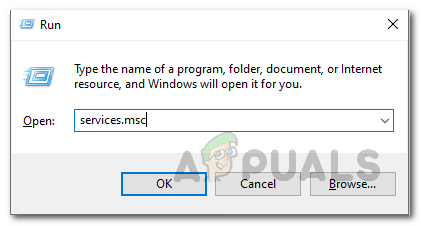
Opening Windows Services - This shall bring up the Windows Services window.
- From the list of all the services shown, locate the Device Association Service. To make this easy, simply press the D key which will take you to the services starting from the letter D.

Device Association Service - Once you have found the service, double-click on it to open up the Properties window.
- There, make sure that the Startup type is set to Automatic. In addition, start the service if it’s not running by clicking the Start button.
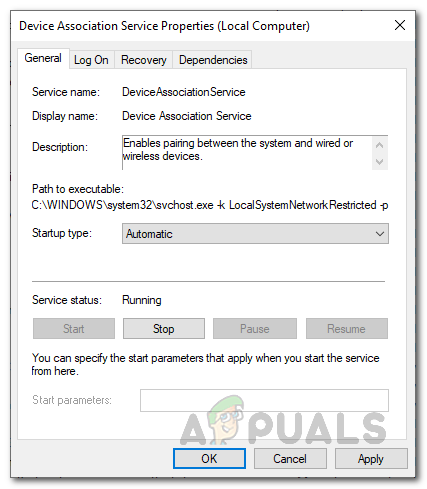
Device Association Service Properties - Once you have done that, go ahead and try to remove the Bluetooth device to see if the issue persists.




